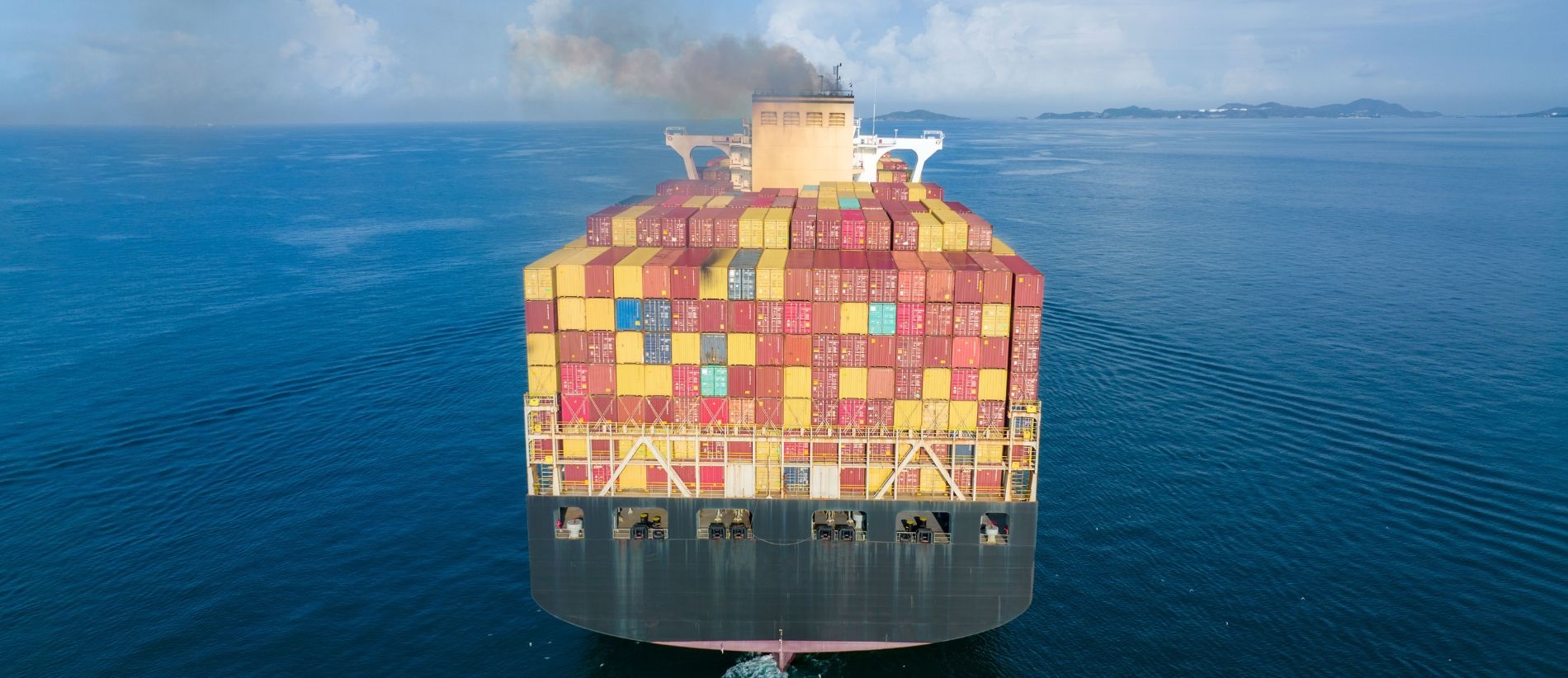Shipping companies are facing significant pressure from clients, investors, and talent to show progress in the implementation of CO2 reduction targets. To develop a more sustainable marine industry, the sector will need to align with the market approach of the banking sector and of the International Maritime Organisation (IMO) and agree on how the investment costs will be split across the supply chain.
The IMO aims to reduce the average CO2 emissions (opens a new window) per transport work (carbon intensity) across international shipping by at least 40% by 2030, pursuing efforts towards 70% by 2050, compared to 2008. Further, the organisation intends to reduce the total annual greenhouse gas emissions (CO2, methane, nitrous oxide, water vapour, fluorinated gases) from international shipping by at least 50% by 2050 compared to 2008 levels.
To reduce their CO2 emissions, shipping companies will need to make significant investments which will require funding from banks. However, because of a misalignment between the various initiatives for decreasing CO2 emissions, for example between the IMO and the EU Taxonomy for Sustainable Finance, the approval process for each segment of the industry, from securing funding and insurance to operating, is currently seen to be complex and obscure. A friction-free lending process will require an alignment of the IMO rules with the banks’ regulatory principles.
To harmonise the rules a group of major shipping banks has launched the Poseidon Principles (opens a new window) which establish a framework for assessing and disclosing the climate alignment of ship finance portfolios. The Principles set a benchmark for what it means to be a responsible bank in the maritime sector and provide actionable guidance on how to achieve this. They also enable financial institutions to align their ship finance portfolios with responsible environmental behaviour and incentivise the decarbonization of international shipping. The Poseidon Principles are consistent with the policies and ambitions of the Initial Green House Gas Strategy adopted in April 2018 by member states of the IMO and establish a common baseline to quantitatively assess and disclose whether financial institutions’ lending portfolios are in line with adopted climate goals. In this way, they also serve as an important tool to manage critical investment risks. Among the issues that still need to be resolved is the alignment of the IMO’s Carbon Intensity Indicator (CII), which addresses how a ship operates such as the fuel used, with the Poseidon Principles.
Currently, the European banks’ approach to environmental issues is based on the European Banking Authority (EBA) rules. In January 2022 the EBA published binding standards for disclosures (opens a new window) on ESG risks to address regulatory shortcomings by setting mandatory and consistent disclosure requirements. The rules are highly sensitive to CO2 green shipping and will be subject to a stress test in the second half of 2022.
An alignment of the rules is essential to motivate banks and investors to fund change in the shipping industry and develop prototype alternative energies: at least USD1 trillion of investment in new fuel technology is required to enable the shipping industry to meet the IMO carbon emission targets for 2050, according to estimates (opens a new window).
The calculations show that the cumulative investment needed between 2030 and 2050 would be between USD1 trillion to USD1.4 trillion, or an average of USD50 billion to USD70 billion annually for the 20-year period.
If the shipping industry was to fully decarbonise by 2050, this would require further investment of some USD400 billion over 20 years, bringing the total to USD1.4 trillion to USD1.9 trillion.
Funding will be needed to develop and test prototype vessels, new engines, and alternative fuel options including the necessary logistics. The development and production of a new vessel is usually a 25-year commitment. First movers take a significant risk, but successful pioneers can also benefit from a competitive advantage. All market participants will need to develop robust risk management capabilities to support any future decisions. As part of this, market participants may want to develop a risk management concept for investors ahead of the IMO’s strategy revision planned for 2026.
Capital expenditures are higher for new and untested technology than for existing solutions and this may create a dispute over who should bear the cost. A global tax to subsidise change could offer a solution but developing key performance indicators will be essential to enable major decisions that could result in a 40-year investment commitment. At this stage it is unclear if future ships will be powered by ammonia, liquified natural gas hydrogen or another source altogether. Shipowners do face a great deal of uncertainty in their decision over engine fuel, especially if the costs are not shared among a wider group of market participants. Whilst early movers that decided to retrofit their vessels ahead of the introduction of tougher rules may benefit financially from the sale of carbon credits, the lack of clarity over who is ultimately going to pay for the investments could slow down the decarbonisation process of the shipping industry.
Lockton and P.L. Ferrari have organised a panel discussion on decarbonising the shipping industry. You can access the recording via this link (opens a new window).
For further information, please contact:
Alexander Gray, Head of Marine P&I
T +65 6221 1288
E alexander.gray@lockton.com

